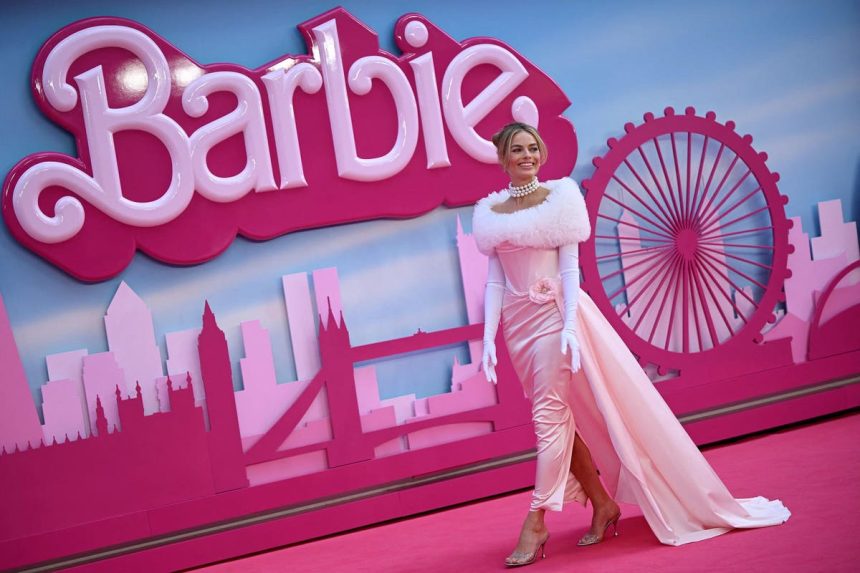It’s hard to imagine the star of one the biggest movies this summer is a sixty-four-year-old bombshell. Barbie is a grand dame who has demonstrated that old is definitely gold when you don’t let it fester. Barbie has had a long journey with many highs and lows. Still, her recent transformation has resulted from meticulously innovating her identity. The toy market is worth $126 billion in 2023 and is estimated to grow by 2.5% yearly. Within this crowded market, Barbie is the number two global toy, demonstrating a serious around for a product that was facing a decline of 30% from 2011 – 2015. The Barbie movie is this summer sensation, the biggest opening weekend for a film directed by a woman, making $377 million. What is clear from the movie’s success is that Barbie is more than just a toy; she has become a platform, indeed a franchise, to catalyze important conversations.
Speaking to Richard Dickson, COO and President at Mattel Inc, we discuss this journey of reinvention. “Ultimately, the brand was at its lowest point in 15 years. It was a very, very difficult time. And in some of those years, we’re talking about a double-digit decline. Barbie had stumbled, and when her story fell out of fashion, it was no longer fashionable to be into Barbie. And so we had to take a hard look at ourselves in the context of what had gone wrong.”
Dickson highlights the seismic shift in advertising around campaigning for women’s bodies propelled by the Dove Real Beauty Campaign. These campaigns created a powerful and positive change that began to challenge the rigid norms of female beauty. When Mattel conducted research with customers, they recognized a strong disconnect with Barbie; “Moms increasingly viewed the brand as vapid, one dimensional, and worse, literally uninspiring.” At this point, an easier option was to relegate Barbie to the archives and launch an exciting new brand that was more relevant. After all, who wants to deal with a brand that carries so much baggage?
However, the story behind Barbie explains why the choice was to reinvent rather than relegate. Barbie was created by Ruth Handler and inspired by her daughter, Barbara. Mattel, the toy company, emerged as a spin-off from another company set up by husband Elliot Handler and Harold Matson. Creating a new mold for dolls in 1959, during her first year, Barbie sold 350,000 units. It would be another twenty-five years before Ruth Handler could open a bank account in her name. Barbie was conceived as a toy to inspire girls to think differently about their futures. Dickson explains, “It’s interesting when you talked about limitless potential and this being the cornerstone of the origins of Barbie because just when you think about that, from a contextual point of view, what limitless potential meant 65 years ago compared to 20 years ago compared to today. That language is powerful, but the context around it is so important. It needed to be repositioned because the assumptions that get baked in become limiting factors in understanding the limitless potential.” He goes on to explain the point of Barbie is that a toy can be reinvented to be timeless and timely. Barbie’s rejuvenation from the cultural wastelands to center stage required considerable shifts in how Mattel handled her.
Transforming a legacy brand risked alienating long-standing fans while wooing a market base that snubbed the doll. Having previously talked to Dickson about his approach to innovation for the book I co-authored Futureproof Your Career, I know how seriously he takes innovation and uses an intentional incremental approach to generate change, inevitable the small steps lead to giant strides. But the force for change had to come from something more profound and sustainable. How did Dickson and his team create the conditions for innovation that brought us to Barbie Summer?
The beginning of Barbie was the starting point that made her so successful and enabled the brand to thrive. Dickson explains the vision of the brand is central to any innovation. “Barbie was created to help girls imagine that they could be anything, and this message is just as relevant today as it was back then. As brand leaders, we always try to evolve, keeping the brand relevant. But when you bring purpose, you make the brand immortal.” The innovation around Barbie has meant reframing what limitless potential means for children today. It’s one thing to talk about changing the perception of Barbie, but quite another to convince customers in a highly competitive market that she is relevant. Dickson and his adopted the approach to use Barbie as a catalyst for children to think about the world, “We have a product that impacts the world, that creates a cultural conversation that has meaning and purpose. If we start to be inspired by ourselves and what we can do in the world, we can be a force for good in cultural conversations. We can be meaningful players. We shifted away from mass marketing to mass-mattering. That’s a mindset.” Mass mattering is the idea that builds on building relevance and being purpose driven. Mattel’s global platform has been used to open up conversations around roleplaying career opportunities and female identity. Mattel has recognized that girls sub-consciously start limiting career options at the age of five due to socialized experiences around them and focus on creating ways for girls, carers, and educators to keep the doors open by demonstrating Barbie across various career paths. Throughout her time, Barbie has represented over 200 different occupations, represented celebrities who push through boundaries, and introduced the first African-American doll in 1968.
Dickson explains, “We have an opportunity as a company to be a force for good. And in that context, we speak to the next generation. Sometimes, Barbie is their best friend, and toys are emotional. They are emotional about the child playing with it. Still, they’re also emotional to the parent by purchasing and watching their son or daughter play with this particular object and its meaning to them.” He goes on to explain the importance of Barbie as a brand of choice; “we now portray Barbie with choices, on body shape, ethnicity, skin tone. This generation is introduced to a very different toy line. We are changing the narrative. Today we look at a toy box, and there’s diversity in the toy box, which, indirectly, is teaching acceptance, empathy, inclusivity, recognizing the beautiful world of diversity, and so that powerful connection is first and foremost about fun and roleplay. But deep down in that core, the brand’s DNA is purposeful.” The purpose of Barbie to catalyze conversations is core to the Barbie movie. Dickson explains, “We wanted to stimulate a cultural conversation and a force for good, and no one was better than Greta Gerwig. So the confidence and collaborative way we worked with Greta gave us the courage and confidence to give her our brand and to tell her Barbie story.
We knew this movie would bring another incredible collaboration in the history of our brand. We had hours and hours of brand immersion and thoughtfulness around the purpose of Barbie and how Greta would interpret that into the brand’s meaning. Of course, Margot Robbie, the main character, is iconic from an image perspective, but we wanted to make sure when the audience left the film, Barbie is stronger because of the diversity that it represents.” Dickson describes how the film presents a light touch of humor to sensitive subjects around gender and patriarchy. I share with Dickson a recent birthday party I attended, Barbie-themed no less, and a room full of forty and fifty-somethings, all representing Barbie and Ken. Dickson laughs and responds, “We now have our vision played back to us, and it is incredibly inspiring and gratifying that the world is now having fun with a brand that has representation and empowerment at its core.” When innovation is at the core, reinvention can be far more potent than creation.
Read the full article here










